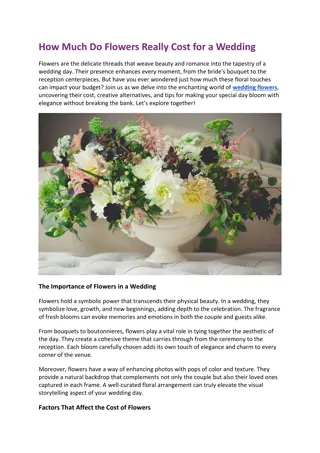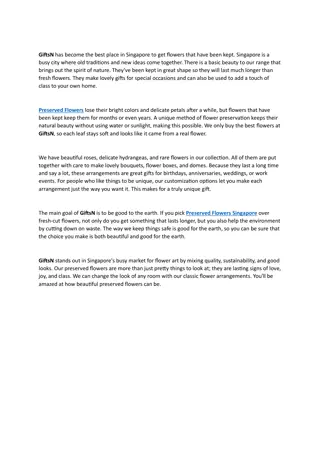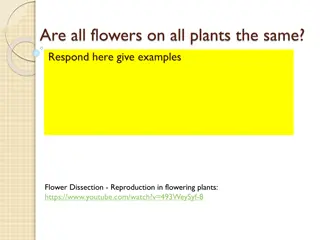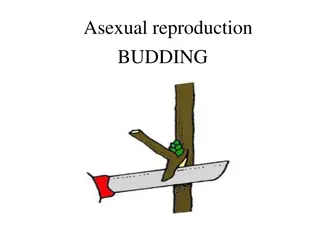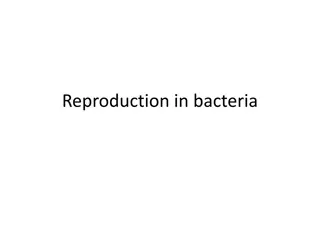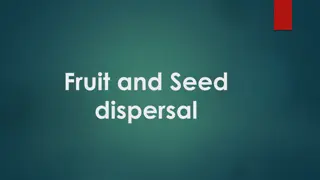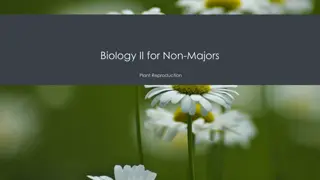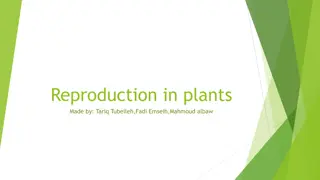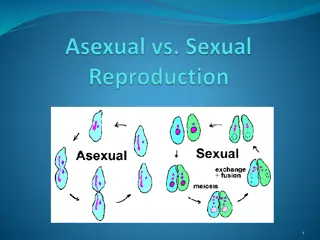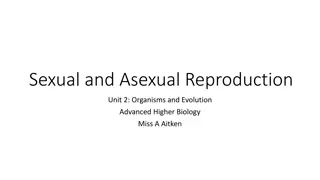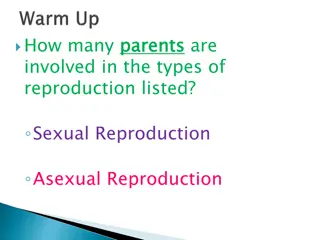Understanding Plant Reproduction through Flowers
Explore the intricate process of plant reproduction through flowers, including the functions of various flower parts, the types of flowers (perfect vs. imperfect), the significance of pollination, and the different pollination vectors involved in ensuring successful reproduction in plants.
Download Presentation

Please find below an Image/Link to download the presentation.
The content on the website is provided AS IS for your information and personal use only. It may not be sold, licensed, or shared on other websites without obtaining consent from the author. Download presentation by click this link. If you encounter any issues during the download, it is possible that the publisher has removed the file from their server.
E N D
Presentation Transcript
Plant Reproduction Flowers
Functions of Flower Parts 1 Ovary- Petal- This protects the ovule and once fertilization has taken place it will become the fruit. Petals are used to attract insects into the flower, they may have guidelines on them and be scented. Ovule- Stigma- The Ovule is like the egg in animals and once fertilization has taken place will become the seed. Is covered in a sticky substance that the pollen grains will adhere to. Style- Receptacle- This is the flower's attachment to the stalk and in some cases becomes part of the fruit after fertilization e.g. strawberry. The style raises the stigma away from the Ovary to decrease the likelihood of pollen contamination. It varies in length.
Functions of Flower Parts 2 Flower stalk- Filament- Gives support to the flower and elevates the flower for the insects. This is the stalk of the Anther. Anther- Nectary- The Anthers contain pollen sacs. This is where a sugary solution called nectar is held to attract insects. The sacs release pollen on to the outside of the anthers that brush against insects on entering the flowers. Once the pollen is deposited on the insect.it is transferred to the stigma of another flower. Sepal- Sepals protect the flower whilst the flower is developing from a bud. The ovule is then able to be fertilized.
2 Types of flowers: Perfect vs. Imperfect Imperfect Perfect a flower that has either all male parts or all female parts EX: cucumbers, pumpkin, and melons a flower that has both male and female parts in the same flower EX: roses, lilies, and dandelions
Pollination Anther splits open when the pollen are mature Pollen is carried to the stigma by wind, water, or animals. THIS is pollination Plant reproduction is most successful when pollination rates are high Pollination is part of - Sexual reproduction, which results in greater genetic diversity (good for the species survival)
Pollination Vectors Wind Pollination: Dull, scentless flowers with reduced petals Bees/Butterfly Pollination: Bright color, nectaries, scent. They sip nectar, get pollen on coats, transfer pollen from flower to flower Bird Pollination: Nectaries, bright colors, tube-like flowers Moth Pollination: White petals, open at night Fly Pollination: Rank odor, flesh colored petals
Fertilization Pollen is carried to the stigma in pollination A pollen grain grows a tube down the style to the ovary Two sperm travel down the tube In a process called double fertilization, one of the sperm fertilizes the egg and the other unites with the central cell, forming an endosperm (which becomes food storage tissue) IS THE UNITING OF THE SPERM AND EGG NUCLEI, CREATING A ZYGOTE.
Fruits and Seeds Following fertilization, the ovary develops into a fruit with seeds inside, while the rest of the flowerdies Fruits help protect the seeds until they mature and help scatter seeds into new habitats -Fruits are the part of the plant that contains seeds: cucumbers, maple helicopters , green peppers, squash are all fruits.
One or two cotyledons forms, which form leaves that will be used by the germinating seedling. Food is derived from the endosperm Thus, the seed is an undeveloped plant embryo with stored food and protective coats
Germination At maturity, seed coat dries and hardens, enabling it to survive harsh conditions Once conditions are favorable, seed germinates (develops into an embryo) and grows into a new plant.


